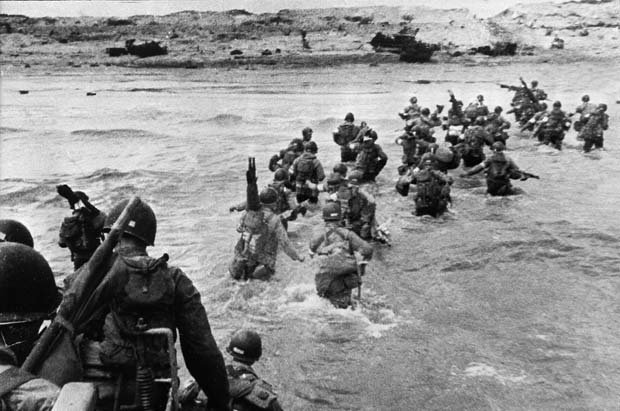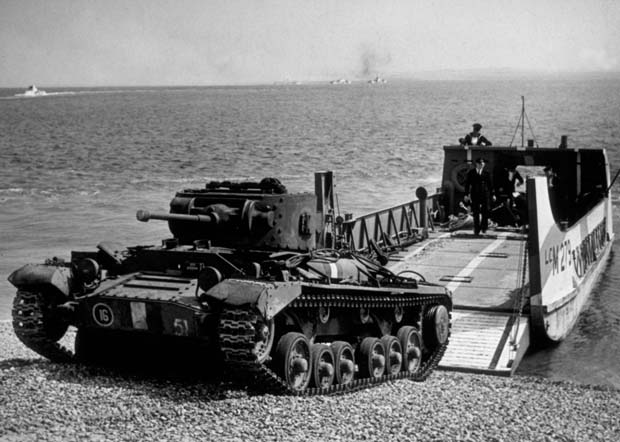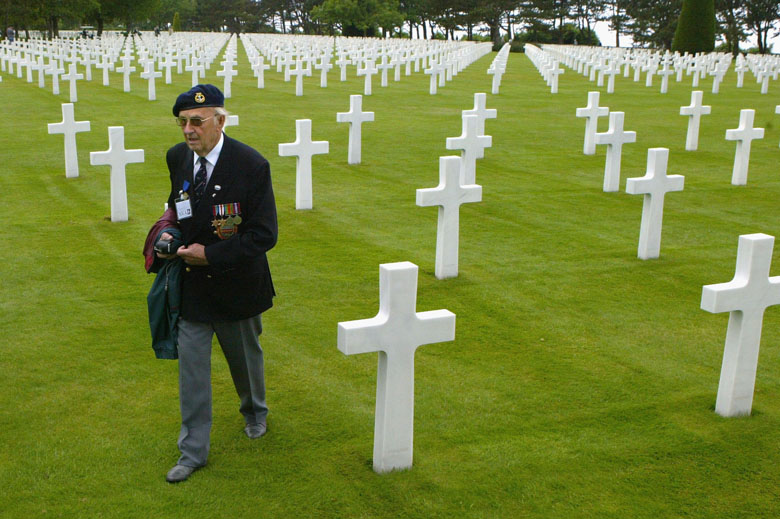
Media Library Today marks the 74th anniversary of D-Day, the pivotal day when Allied forces landed in France to begin the liberation of Europe from the Nazis in World War II.
Today marks the 74th anniversary of D-Day – a pivotal day when Allied forces landed in France to begin the liberation of Europe from the Nazis in World War II.
Code named “Operation Neptune,” D-Day was part of the larger “Operation Overlord.” The belligerents included the Allied forces, consisting of the United States, the United Kingdom, Canada, Australia, Belgium, Czechoslovakia, Denmark, Free France, Greece, the Netherlands, New Zealand, Norway, and Poland – all fighting against Nazi Germany.
Together, the operation began the liberation of German-occupied northwestern Europe from Nazi control, and laid the foundations of the Allied victory on the Western Front.
Here’s what you need to know about D-Day:
1. Eisenhower Took Full Blame and Responsibility of All Casualties & the Outcome of D-Day

6th June 1944: US troops in landing craft, during the D-Day landings. (Photo by Keystone/Getty Images)
According to War History Online:
An interesting fact is that it was originally planned to name the British-Canadian beaches after fishes ― Goldfish, Swordfish, and Jellyfish, which would be shortened to Gold, Sword, and Jelly. Winston Churchill found the name Jelly inappropriate and disrespectful towards the men who would undoubtedly die there; on his insistence, it was decided that the name should be changed to Juno, the name of an important Goddess of ancient Rome.
2. There Has Been More Than One D-Day in History, Often Using Different Letters

UTAH BEACH, FRANCE: US troops disembark from landing crafts during D-Day 06 June 1944 after Allied forces stormed the Normandy beaches. D-Day, 06 June 1944 is still one of the world’s most gut-wrenching and consequential battles, as the Allied landing in Normandy led to the liberation of France which marked the turning point in the Western theater of World War II. AFP PHOTO (Photo credit should read -/AFP/Getty Images)
In military terminology, “D-Day” is the day on which any given combat operation begins. There have been numerous D-Day’s throughout history, but “Operation Overlord” is the most famous of all in history.
Contrary to popular belief, the “D” in D-Day does not stand for “disembark.” The letter is actually used as an indicator to points of time before or after a combat operation begins. For example, D+1 means 1 day after D-Day. H-Hour is also a term used and references the hour on which any given combat operation begins.
History.com states: “Use of these terms stretches back to World War I. One American field order from September 1918 noted, “The First Army will attack at H-Hour on D-Day with the object of forcing the evacuation of the St. Mihiel salient.” Other nations had their own shorthand. In World War I, the French used the code date “J-Jour,” while the British called their operation start days “Z-Day” and ‘Zero Hour.'”
Throughout history there has been A-Day through Z-Day, with only “B-Day” skipped over. Each “Day” with a letter before it as its own militaristic meaning for days and hours.
3. Operation Bodyguard & Fortitude Were Used to Deceive & Distract the Nazi Leaders from the Actual Planned D-Day

1943: A Valentine tank climbs the beach after leaving the landing craft during an invasion exercise in the run-up to D-Day. (Photo by Fox Photos/Getty Images)
Elaborate deceptions, code named Operation Bodyguard, were undertaken in the months leading up to the invasion to prevent the Germans from learning the timing and location of the invasion. Operation Bodyguard was intended to spread Germany forces thin, as it suggested to them that the Allied invasion would be at a number of distant places, including Pas-de-Calais in northern France, the Balkans, southern France, and Norway.
According to NBC News, Operation Bodyguard included a number of smaller operations, including Operation Fortitude, which was created to trick the Germans regarding where the actual D-Day invasion would occur. Fortitude North planned a fake invasion of Norway through Scotland, rigging the Swedish stock market and planting phony radio chatter to make it look and sound like Norway was about to be liberated.
Meanwhile, Fortitude South feigned an invasion of France at Calais, through the Straits of Dover, which was strategically the best place for an Allied invasion. Operation Fortitude North and South was planned hoping that the Nazis would believe Allies had armies ready in England, Norway and Pas-de-Calais, France. Fortitude also led Nazi leaders to believe that the actual date of D-Day would be much later.
4. The Actual Casualty Count for D-Day is Unknown, But Historian’s Estimate the Count is Close to 227 Thousand, with 10 Thousand on D-Day Alone

June 1944: The bodies of American soldiers lie on the ground in Normandy, France, awaiting burial, following the D-Day Allied invasion. (Photo by Fox Photos/Getty Images)
According to the White House Archives, the true number of casualties on June 6, 1944, will never be known, although it is estimated that approximately 10,000 Allied soldiers were killed, wounded and or were missing in action: 6,603 Americans, 2,700 British, and 946 Canadians.
The cost of the Normandy campaign was high on both sides, according to the Archives. “From D-day through August 21, the Allies landed more than two million men in northern France and suffered more than 226,386 casualties: 72,911 killed/missing and 153,475 wounded. German losses included over 240,000 casualties and 200,000 captured. Between 13,000 and 20,000 French civilians died, and many more were seriously wounded.”
5. The Normandy American Cemetery is the Resting Place for Nearly 9,400 Americans

A member of the Folkstone branch of the Normandy Veterans Association walks among the headstones of American soldiers killed in the D-Day invasion June 4, 2004 at Colleville sur Mer, France. (Sean Gallup/Getty Images)
The Normandy American Cemetery is the resting place for nearly 9,400 Americans, most of whom gave their lives during the landing operations on D-Day and the days that followed. According to the Archives, the names of 1,557 soldiers are inscribed on tablets in the cemetery’s Garden of the Missing. They came from all 50 states and the District of Columbia.
The headstones are all made of white Italian marble, with Latin crosses and Star’s of David adorning the stones. According to the Archives, the cemetery is one of 14 permanent World War II military resting places constructed on foreign soil by the American Battle Monuments Commission, “an independent U.S. federal agency that commemorates the service, sacrifice, and achievements of the U.S. Armed Forces.”
“The memorial consists of a semi-circular colonnade with a loggia at each end. On the platform immediately west of the colonnade is sculptor Donald De Lue’s 22-foot bronze statue, “The Spirit of American Youth Rising from the Waves,” a tribute to those who gave their lives in these operations. Around its base is the inscription, “Mine Eyes Have Seen the Glory of the Coming of the Lord.” The floor of the memorial’s open area is set with pebbles taken from the invasion beach below the cliff.”